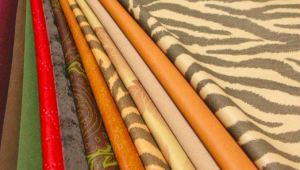Fabric, as the name implies, is the material used to make clothing. As one of the three elements of clothing, fabric can not only interpret the style and characteristics of clothing, but also directly affect the color of clothing, modeling performance effect. Good fabrics play an absolutely critical role in garment production, so the fabric needs to be inspected and tested.
ONE. fabric inspection items and basic quality requirements
Inspection items:
The appearance, weight, density, feel, pattern, color, width, piece length, skew or arc of weft shall be inspected.
Basic quality requirements:
1. The fabric and lining of all kinds of finished products shall not be torn, damaged, broken or seriously defective, such as coarse yarn, which may affect the wearing effect.
Yarn defects, knots, variegated yarns and fabric edges/pinholes;
2. The texture of various fabrics includes composition, feel, gloss, fabric structure, pattern and printing position, size,
The color and density shall be consistent with the sample requirements;
3. Oil, rust, color, water marking, offset printing, scratch printing and other stains are not allowed in all kinds of fabrics and materials.
4. The surface of knitted fabrics shall not be uneven, and the surface shall not have yarn joints;

TWO, fabric inspection procedures
1. Determine the inspection quantity: normally sample size is applied by international inspection standard Default Level II, or required by the customer;
2. Choose the inspection package number or volume number: the fabric inspector can randomly pick out the fabric that needs to be inspected according to the fabric factory’s fine size list
Cover all colors. The inspection quantity of each color is determined according to the proportion of each color in the batch of fabric;
3. Check the fabric quantity: check whether the actual quantity is consistent with the supplier’s fine size order, packing code order and marking code of cloth volume
4. Check the color and feel of the fabric: check whether the color and feel of the fabric are the same as the color and quality samples of the fabric confirmed by the customer;
5. Check the fabric width: measure the actual width of the fabric head, middle and tail, and the fabric width should meet the order requirements;
6. Check the color check: check whether there is any deviation between the two sides and the cloth in the middle. Fabric can not have before and after chromatic aberration, left and right
Chromatic aberration and color flower. Check whether the color and feel of the fabric are the same as the color and quality samples of the fabric confirmed by the customer; color
The discrepancy shall not be less than level 4 or the standard required by the customer, and the discrepancy shall be more than level 4;
7. Check the defects on the fabric inspection machine. The speed of the fabric should be suitable. Improper speed will affect the accuracy of cloth inspection. When making defect inspection, marks should only be deducted for visible defects that affect garment processing and affect appearance. Make records while checking.
8. When defects are found during fabric surface inspection, use the color line to make an obvious mark, so that cutting and paving materials can be found at any time. If this batch of fabric is not qualified, it needs to be returned. It is also convenient to explain the defect status and reason of return to the fabric factory, and record the deduction points.
9. Count the number of unqualified cloth rolls and count the number of defects to determine whether they are qualified.